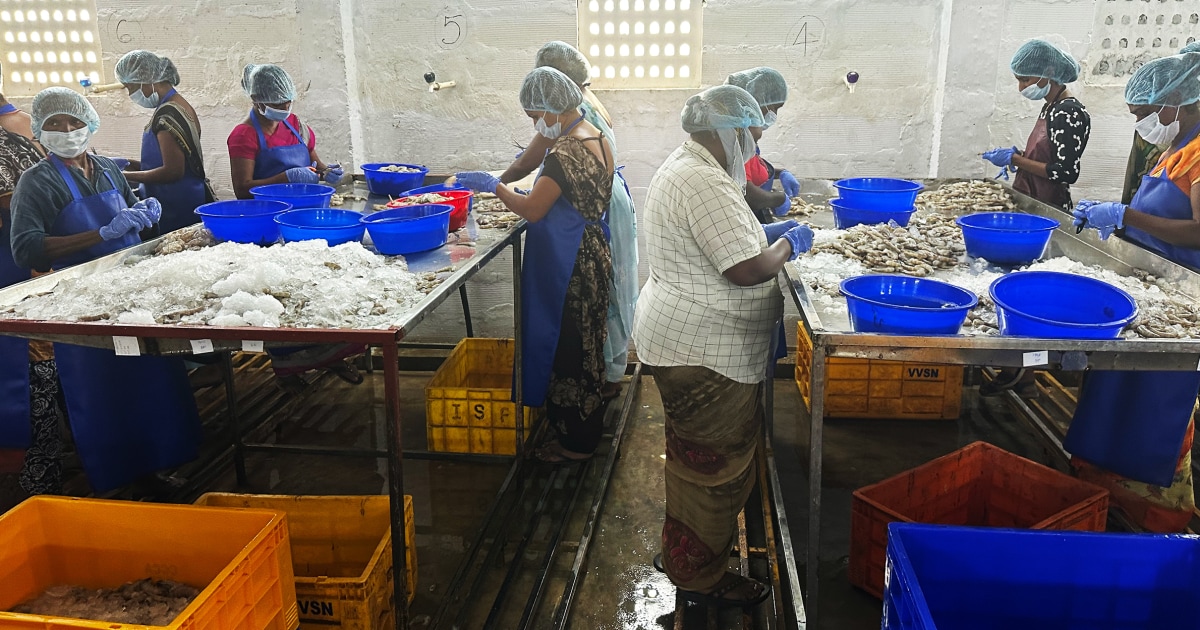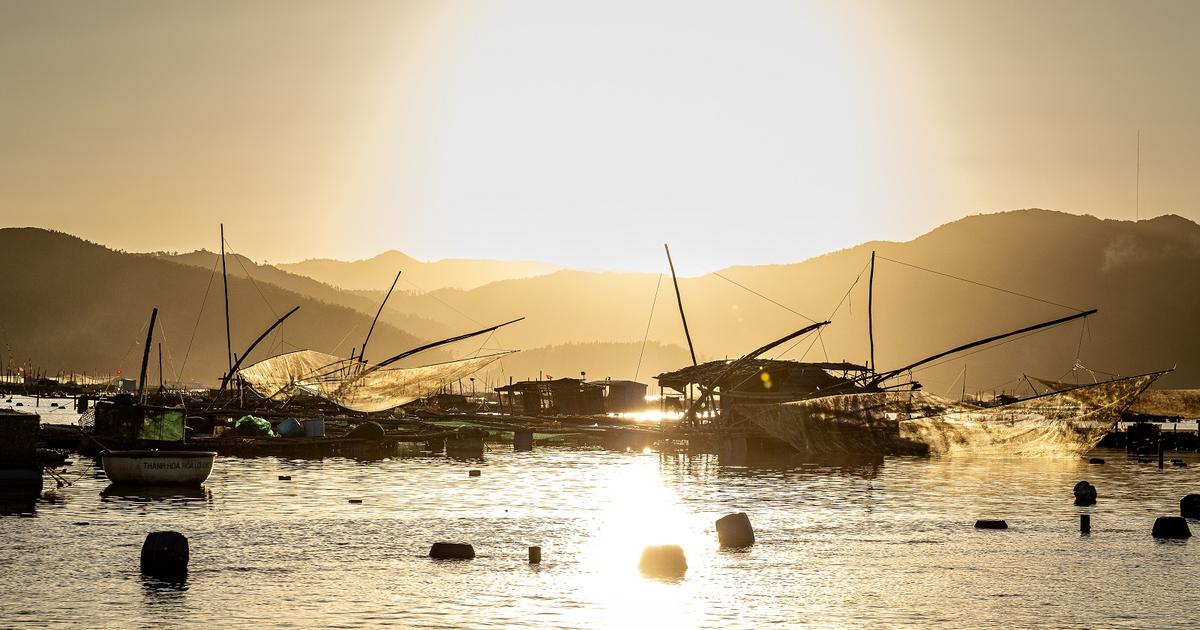“As you can see, when they arrive here, the prawns are gray,” comments Didier Le Tetour, director of Unima's cooking workshop in Boulogne-sur-Mer, opening a box.
It is in this small factory that the company receives the frozen shrimp that it raises and slaughters in farms in Madagascar recognized as "sustainable" and "responsible".
At the exit of the defrosting tunnel, the crustaceans even display beautiful bluish reflections.
“While feeding, the animal absorbs an orange pigment, carotenoids, identical to those of the carrot, but this pigment is blocked by the blue-grey colored crustacyanin.
It is during cooking that this protein is destroyed and reveals the color of the shrimp which colors the stalls”, continues the expert.
A few meters further on, the plastic boxes of orange-pink prawns are covered with their lids, ready to be dispersed in fishmongers all over France.
Find all the episodes of our video series “Food Checking”
The story could have ended there.
Didier Le Tetour, fair play, did not wish to comment on the dyes used by some of the competitors.
And the company's communication had clearly refused to answer any questions about the sulphites used when slaughtering the shrimp.
Yet the ingredient "sodium disulphite" is well written black on white on the box of frozen shrimp stored in Boulogne.
It is found on the plastic packaging sent to professionals.
And, although it mysteriously disappears from the label at fishmongers, it is indeed advertised in product ingredient lists on supermarket websites.
“This antioxidant is intentionally added for cosmetic reasons,” explains Kelly Frank, an agricultural engineer specializing in ultra-processed foods, “taste expert” and founder of the consulting company Goum.
Without it, shrimp may develop harmless black spots that are unattractive to the consumer.
However, in an article published in November 2022, the EFSA (European Food Safety Authority) pointed out that the family of sulphites "poses a safety problem for large consumers".
In other words, to solve a false problem, we created a real one... In the rest of our video, we compared the label of the Unima product with those of other ingredients on the shelf, then organized a blind tasting with chef Thibault Sombardier, at the head of the Sellae and Mensae restaurants in Paris.
To find out what we discovered, press “play”.
We wanted to devote our report to the color of shrimps: how is it that a gray animal in the wild sports a beautiful characteristic orange-pink on our stalls?
!
And as sometimes happens, it was while doing our report that we realized that the "real" story was elsewhere...
And for this, the Unima company, which breeds Label Rouge shrimp in Madagascar, had agreed to welcome us to its "cooking workshop", a small factory in Boulogne-sur-Mer, where frozen crustaceans are processed before being marketed in fishmongers in France and in particular those in supermarkets.









